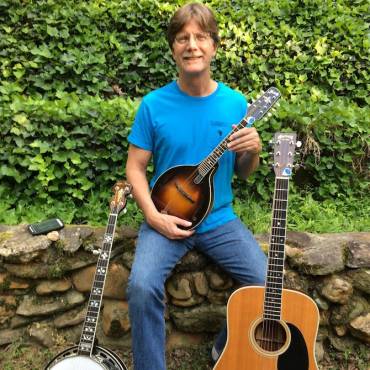Improve Your Vocal Break Easily Today
We’ve all been there.
You’re going up to that beautiful high note when all of a sudden your voice cracks like a 12-year-old boy’s.
The truth is, vocal breaks are very common.
In fact, many famous singers deal with voice cracks as well.
If Shawn Mendes, Kelly Clarkson and Ariana Grande can crack on high notes, so can you.
But what causes this vocal break?
And more importantly, what can we do to prevent it?
Read on.
Fix Your Vocal Break Today
Many singers want to fix their vocal break.
But in order to fix your vocal break, we need to understand why they happen in the first place.
So let’s get started.
What is a Vocal Break?
A voice break or voice crack is a sudden shift in the tone of your voice.
Voice cracks usually happen at the transition between your different vocal registers.
What does that mean?
Usually, when we’re singing from the bottom to the top of our voice, there is a sudden change that sounds like a crack or break in the voice.
This vocal break usually happens when you’re transitioning from your chest voice to your head voice.
If you’ve never head the terms chest and head voice before, don’t worry.
Here’s what you need to know about why voice breaks happen.
Chest Voice 101
In the old days, singers found that notes at the bottom of their range resonated in their chest.
They called this range of notes Chest Voice.
You can feel this by placing your hand on your chest and saying your name aloud at a strong volume.

Do you feel that buzzy sensation?
That’s chest voice.
With the help of modern science, we know that chest voice doesn’t really come from the chest.
In fact, the strong powerful volume we hear in chest voice comes from the vocal folds.
And in chest voice, the vocal folds are short and thick.
Chest voice notes sound strong because the vocal folds have a strong resistance to the air from your lungs.

What the vocal folds look like in chest voice.
Head Voice 101
Those same old-school singers found that notes at the top of their range resonated in their head.
So they called this range of notes Head Voice.
You can feel head voice by placing your hand on the back of your neck and singing a loud “Wee” (as in “Week”) on a high note.

Do you feel that vibration on the back of your neck?
That’s head voice.
But the truth is that the head voice doesn’t really come from your head.
Actually, that flutey, breathy falsetto sound comes from vocal folds that are stretched and thin.
Since the cords are thin, they’re not able to resist the air from your lungs, resulting in a thin, breathy sound.

What the vocal folds look like in falsetto.
Why Does the Voice Break?
Here’s why knowing Chest Voice and Head Voice is important:
The voice usually breaks when going from the thick cords of chest voice to the thin cords of head voice.
I like to compare it to a relay race.

In a relay, one runner hands off a baton to another runner.
Then the second runner starts running.
Your voice works the same way.
Once you sing up to a certain pitch, the chest voice “hands off” to the head voice.

In other words, at a certain point, the vocal folds go from being thicker to thinner.
This transition point is called the bridge or passagio.
But sometimes that hand off of really sloppy.
If your vocal cords thin out too quickly at the bridge, you get a big vocal crack.
The Two Causes of Vocal Breaks
Here are the two main causes of vocal breaks when learning how to sing.
We now know that the voice breaks when the vocal cords thin out too quickly at the bridge.
There are two main ways this can happen.
1. The voice can crack when singing with too much head voice.
Remember that in head voice, the vocal cords are thin.
But many people sing too breathy and thin across their whole range.
And if the notes are weak, you don’t have a chance of hitting high notes with power.
That’s because as you go up in pitch, the vocal cords thin.
So if you’re starting out weak, there’s no way of getting stronger as you go up.
2. The voice can also crack when singing with too much chest voice.
We now know that in chest voice, the vocal cords are short and thick.
But if you sing too heavily at your bridge, your voice can strain, resulting in a voice crack.
That’s because in order to sing through the bridge, the vocal cords must thin out.
But many people sing too heavily across their range, fatiguing their voice and making them crack.
Want to Nail Those High Notes?
Every singer wants to expand their range. Expand Your Range Fast will show you how to finally hit high notes in your voice without straining. Expand your range by 5 notes or more!
You Can Improve Your Vocal Break
Many singers will try to avoid their vocal break by singing below their bridge.
But that doesn’t help!
After all, we all want to hit high notes without falsetto.
The best way to improve your vocal break is learning to sing through it.
Learning to sing through the bridge without cracking is called Singing with a Mix and is the foundation for The Best Singing Techniques to Improve Your Voice.
Singing with a mix means singing through the bridge with a mix of the chest voice and head voice.
In other words, your vocal cords are the right thickness for all the notes in your voice.
What does that mean?
Singing with a Mix means being able to hit high notes with power and without straining.
I’ve written an article with tons of exercises to Hit High Notes with a Mix.
But for now, let’s try a few exercise to help you sing through your bridge.
They’re divided into two sections according to what causes your break.
How to Fix Your Break if You’re Singing Breathy and Light
We now know that if you’re singing too breathy and light, your high notes will crack.
So the following exercise will help you hit all the notes with more power.
In this case, we’re going to be using a short scale (just an octave) and a ugly, “bratty” sound to strengthen your voice’s resistance to the air from your lungs.
So if your high notes have been cracking because you’re singing too lightly, this exercise is for you!
The Octave Repeat Bratty “Nay”
Are you ready to get those notes stronger than ever and fix your vocal break?
Here’s how you do it.
1. Begin by saying the word “Nay” (as in “Neighbor”) in a bratty way. The tone should be buzzy and nasal-sounding.
If you need help finding the right sound, try to imitate the wicked witch of the west from the Wizard of Oz.
We’re looking for that bright, brassy, “witchy” tone.
2. Now find a comfortable starting pitch (try E3 for guys and C#4 for girls) and begin to sing the bratty “Nay” on this pitch.
3. Sing the following scale.
Here’s the scale for guys:

Here’s the scale for girls:

Check out this video for a demonstration of the exercise and correct scale.
How to Fix Your Vocal Break if You’re Singing Too Heavy
We also know that if you’re singing too heavily at your bridge, your vocal folds will simply “give up” and your high notes will crack.
So the following exercise is designed to help thin out your cords and sing through your break.
In this case, we’re going to be using a longer scale (an octave and a half) and a narrow vowel to help you find more head voice.
So if your high notes have been cracking because you’re singing too heavily, this exercise is for you!
The Octave and a Half “Gee”
Are you ready to get rid of the strain that’s causing your voice to crack?
Here’s how you do it.
1. Begin by saying the word “Gee” as in “Geese” at a comfortable volume.
2. While saying the word “Gee”, make sure that you are enunciating the “G” consonant.
3. Now find a comfortable starting pitch (try C3 for guys and G3 for girls) and begin to sing the word “Gee”.
4. Sing the following scale.
Here’s the scale for men:

Here’s the scale for women:

Check out this video for a demonstration of the exercise and correct scale.
How to Fix Your Vocal Break if You Don’t Know Why Your Voice is Cracking
When you’re practicing on your own, it can be hard to know exactly why the voice is cracking.
Taking regular lessons with a certified voice teacher is the best way to help fix your vocal break.
But for now, let’s do an exercise that covers all the bases.
In the case of the following exercise, we’ll be using a short scale (an octave) to help the cords thicken.
But we’re also going to be using a narrow, back vowel (in this case an “oh) to help the vocal folds unpress.
So if you have no idea why your voice is breaking, this exercise is for you!
The Octave Repeat “No”
Are you ready to hit those high notes with more power and less strain?
Let’s get started.
Here’s how you do it:
1. Begin to say the word “No” (as in the word “Note”) aloud at a comfortable volume.
2. Now find a comfortable starting pitch (try E3 for guys and C#4 for girls) and begin to sing the “No” on this pitch.
3. Sing the following scale.
Here’s the scale for males:

Here’s the scale for females:

Don’t worry if you can’t read music or don’t have a piano at home.
Here’s a helpful video to talk you through the exercise:
Congratulations
With any luck, one of the previous exercises helped you sing through your bridge without breaking.
Learning to sing across your range without breaking takes some skill and the right vocal technique but it’s totally worth it.
If you’re having any trouble singing those notes without breaking, book your first lesson at the Ramsey Voice Studio.
Want to Nail Those High Notes?
Every singer wants to expand their range. Expand Your Range Fast will show you how to finally hit high notes in your voice without straining. Expand your range by 5 notes or more!






10 Comments
Hello MATT, VERY HELPFUL AND USEFUL INFORNATION. I’VE BEEN STRUGGLING WITH THE TRANSITION WHEN DOING VOCAL EXERCISES so think this will improve things for me.
Hey Bob, nearly everyone struggles with this! Keep up the great work!
Yeah it nice
Nice!
Thank you so much! This video DEFINITELY helped me!
I’m so glad Tiffany!
I can go as high as an A5 with my head voice but i cannot enunciate THe words well. I can do the ohhh sound but the ahhh would always crack. Why is it so
Hey Prosper, as you sing higher, the vowel sounds start to blend together, making enunciation more difficult.
Thank guy,this is one of the best article have read so FAR.
I have always had a problem with the u vowel but with this I think I can break the barred.
And one again thanks so GREATful.
Nice work David!